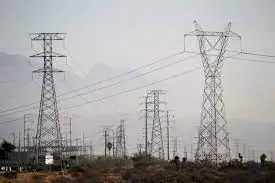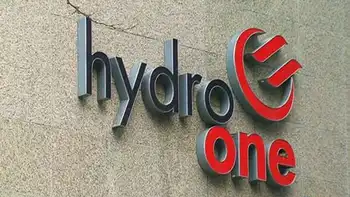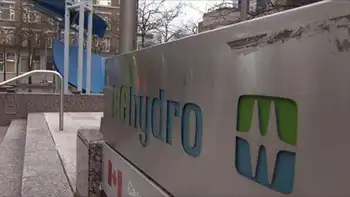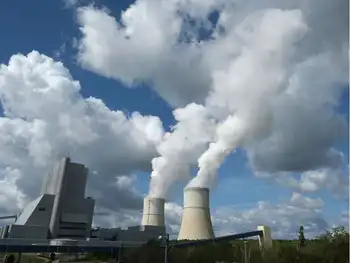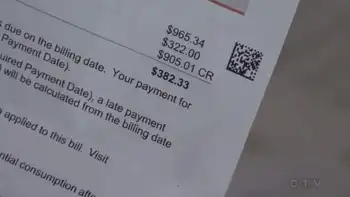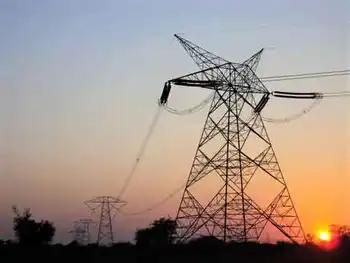Consumers warned of cost hikes
By Calgary Herald
Protective Relay Training - Basic
Our customized live online or in‑person group training can be delivered to your staff at your location.

- Live Online
- 12 hours Instructor-led
- Group Training Available
While battles continue to rage over who should build and pay for new power lines, and how Alberta fits into the carbon trading world, there was one sobering consensus; consumers will be paying more to switch on the lights.
"If we're going to maintain our lifestyle and the province's economic growth, we require an adequate, reliable source of competitively priced electricity," Energy Minister Mel Knight told the Independent Power Producers Society of Alberta conference.
"We need more plants to generate more electricity and more transmission to move that power to customers."
Without the lines, investors might not be interested in building those plants, and all Albertans could suffer the consequences, Knight cautioned.
The Alberta Utilities Commission announced hearings on an application to improve the transmission system in southern Alberta.
The Alberta Electricity System Operator says as much as $3.5 billion in system reinforcement may be required in southern Alberta to accommodate expected growth in wind-power generation and system constraints, in three stages, by 2017.
The hearings, which will take place in communities throughout southern Alberta in June, will focus on whether the reinforcement is needed as well as social, environmental and economic considerations.
At the conference, analysts said industry will see winners and losers in the move to reduce carbon dioxide emissions, in terms of price per tonne, with renewables winning and coal and oilsands losing.
"It could add up to as much as $2 billion to $3 billion a year in costs to the industry," said analyst Duane Reid-Carlson.
The price differential between the Power Pool price of electricity and the cost of carbon to generators could be as high as $9.71 per megawatt hour, Reid-Carlson estimated.
The price increase would be about half of the cost of carbon reductions to a large emitter, raising the question of how they will recover the costs.
Already, renewable energy sources such as wind have an advantage over fuel-burning generation in that they can be sellers on a carbon trade market rather than buyers.
Professor Joseph Doucet of the University of Alberta questioned the need to eliminate congestion on Alberta's power lines, suggesting it could open the door to over-investment in generation.
The broader issue of addressing climate change through reduction of carbon dioxide emissions will impact the power struggles around transmission, Doucet added.
"At some point a carbon price will be incorporated such that different types of resources will be priced on their average greenhouse gas emissions," he said.
Neil McCrank, former head of the Alberta Energy and Utilities Commission, argued open access to transmission was vital to Alberta, and supported reducing congestion.
McCrank also supported continued government oversight to regulate the provincial system in the public's interest. He called for Alberta to step up to the challenge of building new lines with existing policies, noting the potential of government intervention can stall investment.
Knight reassured conference participants the Alberta government was not going to meddle with Canada's only fully deregulated wholesale and retail power market.
"Supply and demand and the price signals that those create are excellent investment incentives," Knight said. "Governments should always continue to make sure that our policies and regulations support and enforce competitive wholesale and retail markets for our electricity.
Alberta has committed $2 billion toward making carbon capture and storage a viable technology to reduce carbon dioxide emissions from large single emitters such as oilsands operations, the petrochemical industry, and power generators. Knight said the funding will be directed toward supporting carbon capture components of each facility, and not toward the facility itself.
The comment could have been made to assuage concerns the incentives around carbon favoured certain industry sectors over others.
Doucet agreed carbon capture technology will be vital in Alberta's energy-based economy, but stressed the need to think globally, as well.
"We have to look beyond our borders and be open to credit trading when it comes to emission reduction objectives," he said. "We may get less expensive emission reduction elsewhere."
The advent of the Obama administration in the United States has accelerated interest in carbon emission regulations, and the possibility of creating a harmonized North American cap-and-trade system.
But Timothy Juliani with U. S.-based Pew Center on Global Climate Change noted the United States has to establish its own system before grappling with a continental one.
For Reid-Carlson, the carbon emissions ball already is rolling in the direction of a cap-and-trade system from an intensity-based one to address reductions.
"It's anybody's guess, but given the direction we're going, our sense is that our emission-intensity policy probably will be replaced by something cap and trade," he said.





